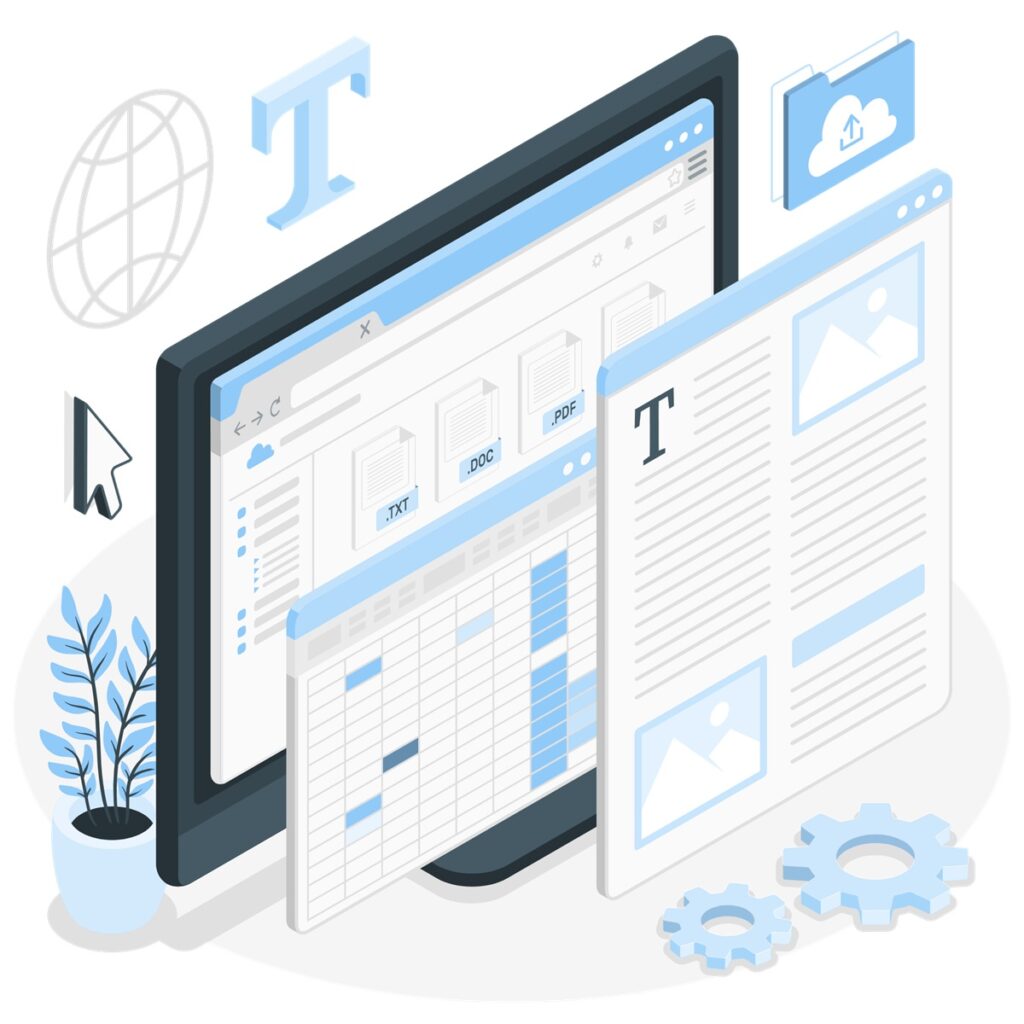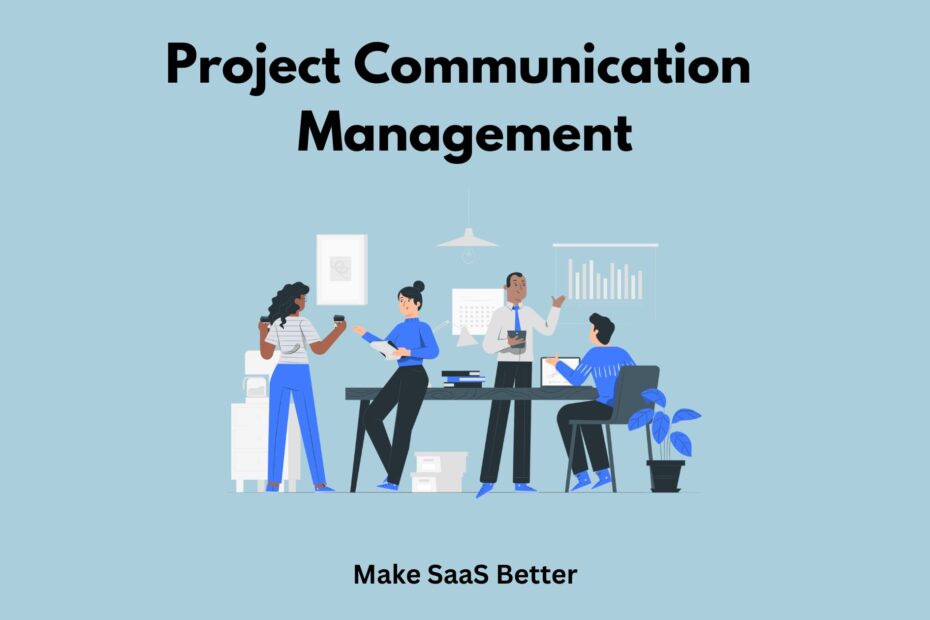Projects often just stop. Not from big mistakes, but from small, missed messages. Things not said. Things taken for granted. Words that disappear.
Think about this: bad communication causes 29% of projects to fail. Almost a third of all projects go wrong because people didn’t speak clearly. And only 29% of groups finish projects on time. A lot of work, wasted.
This isn’t about being nice. It’s about getting things done. Everyone needs to be on the same page. Knowing what’s happening. Knowing when. Knowing why.
Project talk isn’t a bonus skill. It’s the basic requirement. It’s the difference between building something that works and just going in circles.
What Is Project Communication Management?
Project communication management is simple. It’s the processes you use to make sure the right information goes to the right people, at the right time, and in the right way. It’s about planning how you’ll talk, who you’ll talk to, what you’ll talk about, and when.
This includes everything from team updates to stakeholder reports. It’s about creating a clear path for information flow. It ensures everyone involved, from the project team to external clients, is on the same page. Without it, you have chaos. With it, you have a chance.
Why Is Project Communication Management Important?
Bad communication ruins projects. It causes mix-ups. Leads to delays. Wastes cash. Picture a building job: the architect’s plans don’t get to the builders. Or client changes skip the design team. A mess.
Project communication management stops this. It keeps everyone clued in. Builds belief. Helps make good choices. When all knows what’s happening, issues show up sooner. Fixes come quicker. It’s about being open. It cuts down fights. Makes sure aims are clear.
A project manager doesn’t just handle tasks. They also handle talks. They make sure everyone gets the project’s goals.
Major Types of Project Communication
1. Formal Communication
This is structured. It follows rules. Think official reports, contracts, meeting minutes, and project charters. It’s documented. It’s usually for important decisions or legal matters. This type of communication leaves a paper trail. It’s for clarity and accountability.
For example, the signed agreement on scope changes for a software product is a formal communication.
2. Informal Communication
This is the casual stuff. Chats, quick emails, hallway conversations. It’s flexible. It helps build relationships and solve small problems fast. It’s good for quick updates or clarifying something on the fly.
A team member asking a colleague for a quick explanation of a task is informal communication. This helps build stronger team communication.
3. Internal Communication
This happens within the project team and organization. It keeps everyone on the inside aligned. It’s about team updates, task assignments, and internal meetings. It keeps the core group moving together.
For instance, a daily stand-up meeting where developers share progress and blockers is internal communication.
4. External Communication
This goes outside the project team. It’s for clients, vendors, stakeholders, and the public. It includes marketing communication, press releases, or official updates to the customer. It manages expectations and relationships with those outside the immediate project.
For example, a monthly report sent to the project’s main investor is external communication. This can also include brand communication, shaping how the project is perceived by those outside.
5. Verbal Communication
This involves spoken words. Meetings, phone calls, presentations. It allows for immediate feedback. It’s good for discussions, brainstorming, and resolving conflicts quickly.
Oral communication allows for tone and body language to add meaning. A project manager giving a progress update during a video call is an example.
6. Written Communication
This is text-based. Emails, documents, chat messages, reports. It creates a record. It’s good for detailed information, formal approvals, and historical tracking. It removes ambiguity if done right. Sending a detailed email outlining new requirements to the development team is written communication.
7. Push Communication
Information is sent without a specific request. Think mass emails, newsletters, or company-wide announcements. The sender “pushes” the information out. It’s good for broad updates, but doesn’t guarantee the receiver understands it. An example is a project manager sending a weekly status report to all stakeholders.
8. Pull Communication
The receiver actively seeks the information. Think of a project dashboard, a shared document repository, or an internal knowledge base. The information is available, and people “pull” it when they need it.
This is good for large amounts of information, and people can access it at their own pace. A team member checking the project’s task board for their next assignment is pull communication.
How To Create an Effective Project Communication Management Strategy?
1. Identify Stakeholders
Who truly cares about this project? List everyone. Your team, yes. Also clients, your boss, vendors, anyone affected. They all have different needs and interests. Find out who they are and their role. This is step one. Miss this, and you’re behind.
Don’t just list them. Dig deeper. What’s their power? What do they gain or lose? An executive needs quick updates; a developer needs technical details. Map out what they expect. Understand their hidden goals. If you don’t know your audience, your message is just noise. Think about the quiet partners. The ones who can stop your project from the shadows. Find them early. Know how they like to hear things.
2. Define Communication Goals
Why are you talking? What’s the point of this message? To tell someone something? To get a choice made? To fix a problem? Every message needs a clear aim. Don’t just send updates because it’s Tuesday. Send them for a specific reason or action. If there’s no goal, there’s no reason to talk.
Before you speak or type, know what you want to happen. Is it to get a yes? To warn someone of a risk? To just say a task is done? A fuzzy purpose leads to fuzzy results. Be clear.
3. Determine Key Messages and Information
What’s important, what’s not? Most people send too much. Don’t. What information is truly key? What moves the project forward? Focus on progress, problems, big changes, and decisions needed. Cut the extra stuff. People are busy. Give them only what they need. Nothing more.
This isn’t about dumping data. It’s about picking the right pieces. What’s the one thing they need to know now? What action do they need to take? Put the important things first. Make it easy to read. Every extra word takes up their time.
4. Select Communication Methods and Channels
How will this message get there? An email for a long report. A quick chat for a small question. A face-to-face meeting for a big issue. The tool must fit the job. Sending an urgent request by email might cause delays.
A customer communication program can sort outside messages. Pick well. Don’t just use email for everything. Think about how fast it’s needed. Think about how hard it is. A quick call fixes a problem faster than many emails. A visual dashboard shows status better than a written report. Match how you send it to the message itself.
5. Set a Communication Schedule
Being steady wins. When do updates go out? Daily team talks? Weekly reports? Monthly client meetings? Set a rhythm. People know what to expect. No surprises. No constant stopping. This builds trust. It makes talking a habit, not a random thing. Being able to guess what’s next is powerful.
When people know when and how they’ll get information, they stop chasing you. This frees up your time. It frees up their time. Stick to the plan. Make it a must-do.
6. Assign Responsibilities
Who owns this message? Who writes the update? Who leads the meeting? Give clear jobs. If everyone is in charge, no one is. This stops communication from breaking down. One person, one task. Simple. Every piece of communication needs a boss. This stops blaming. It makes people answerable. If a message isn’t sent, you know who messed up. Make it plain.
7. Establish Feedback Mechanisms
Did they get it? Did they understand? You need to know. Create ways for people to reply. A quick survey. A time for questions in meetings. A way to ask questions freely. This finishes the loop. It tells you if your message worked. If it didn’t, you fix it. Don’t just talk at people. Listen. Build in ways for people to tell you if the message was clear. Or if they need more. Or if they don’t agree. Without feedback, you’re blind.
8. Monitor and Adjust
No plan is perfect forever. Things change. Watch how your communication works. Are people getting the message? Are there still confusions? Be ready to change. If something isn’t working, fix it. Your plan is alive. The real world isn’t a book. Your project will hit bumps. Your communication plan needs to bend, not break. Check it. Get thoughts on the plan itself. Is it working? Is it too much? Too little? Make changes. Stay ready for anything.
Best Practices to Improve Project Communication Management
1. Plan for Communication Early
Don’t treat communication as an afterthought. It’s not a bonus. It’s the foundation. From day one, build communication into your project plan. Figure out who needs what information. Decide how and when you’ll tell them. This isn’t just about sending emails. It’s about setting a clear standard. A communication plan built from the start shows you’re in control. It prevents panic later. It ensures everyone is ready.
2. Be Clear and Concise
Nobody has time for fluff. Cut the jargon. Get to the point. Say exactly what you mean, in simple words. People are busy. They need information fast. Long sentences and complex language just create confusion. They hide the real message. Think like a headline writer. Deliver the core idea, then stop. Clarity isn’t an option; it’s a necessity. It makes sure your message lands.
3. Listen Actively
Communication is not a one-way street. You talk, then you listen. Truly listen. Don’t just wait for your turn to speak. Ask sharp questions. Dig deep to understand. Confirm what you hear. Most people only broadcast. They miss the actual feedback. They miss the hidden problems. Listening builds real trust. It uncovers what’s truly going on. It’s how you learn, how you adapt.
4. Provide Regular Updates
Silence kills projects. It creates doubt. It sparks rumors. Don’t let people guess. Send updates often. Be consistent. Even if there’s nothing new, say it. “No changes today. Still on track.” That’s far better than dead air. Regular updates keep everyone aligned. They show progress. They stop anxiety. It’s about setting a steady rhythm, not waiting for a crisis.
5. Choose the Right Medium
Every message has its perfect home. A quick chat for a small question. A direct call for something urgent. A formal meeting for a big decision. A detailed report for complex data. Don’t send a long email for a simple “yes” or “no.” Don’t try to solve a conflict over text. Match the tool to the task. The wrong medium wastes time. It causes miscommunication. Use the right channel to get through the noise.
6. Encourage Openness and Feedback
Create a space where people can talk freely. No fear. No judgment. Welcome all questions, even the tough ones. Ask for input constantly. Act on it. Most problems stay hidden because no one feels safe enough to speak up. A closed environment breeds resentment. It hides issues until they become massive. Open communication isn’t just a nice idea; it’s how you find problems before they crush you.
7. Tailor Your Message to the Audience
One size never fits all. Talk to an engineer about their code. Talk to a client about their results. Talk to an executive about profit and timelines. Use their specific language. Focus on what matters to them. Generic messages lose impact. They get ignored. Understand who you’re speaking to. Then craft your words to hit home in their world. It’s about being relevant, not just right.
8. Document Key Decisions
Write it all down. Every major decision. Every agreed change. Every shift in scope. Get it in writing. Send it by email. Put it in a shared document. Memory fades fast. People forget. Arguments happen. A clear record cuts through the confusion. It provides proof. It brings clarity. Documentation isn’t red tape; it’s your safety net. It saves you from those “I thought you said…” moments.
Tools for Project Communication Management
1. Project Management Software

Your project has moving parts. Many of them. You need one place to see it all. These tools centralize everything. Tasks. Deadlines. Who’s doing what. It’s the hub. No more digging through emails for status updates. They give you a real-time pulse. A single source of truth for progress. This means fewer questions, more work.
- Examples: Asana, Monday.com, Jira, Trello, Wrike.
2. Team Collaboration Tools

Daily chatter. Quick questions. This is where the team lives. These tools cut through the email clutter. Instant messages. Shared channels. A quick video call to clear things up. It’s about speed. Getting answers without waiting. They keep your team tight, connected. Less guessing, more doing.
- Examples: Slack, Microsoft Teams, Google Meet, Zoom, Discord.
3. Document and File Sharing Platforms

Documents everywhere? Old versions floating around? That’s how projects crash. These platforms are your central library. Every plan, every brief, every file. One location. Everyone sees the latest version. No more “is this the right one?” questions. It saves time. Prevents major errors. Your team works from the same playbook.
- Examples: Google Docs, Microsoft Office 365, Confluence, Notion.
4. Email

Email isn’t dead. It’s just specialized. For formal stuff. Official announcements. Reports that need a record. It’s asynchronous. You send, they read later. It’s not for urgent back-and-forths. But for structured updates, it works. It creates a paper trail. Keeps things documented. Use it for what it’s good at.
- Examples: Gmail, Outlook.
5. Video Conferencing Tools

Sometimes, text isn’t enough. You need to see faces. Hear tone. Video calls close the distance. Brainstorming sessions. Kicking around tough problems. It’s as close to being in the same room as you can get. Builds rapport. Clears up misunderstandings fast. Essential for remote teams. Or when you need real human connection.
- Examples: Zoom, Google Meet, Microsoft Teams, Skype.
6. Customer Communication Management Software

Your customers need attention. They need updates. Customer Communication Management tools handle that stream. From project status to feedback. They keep external communication clear. It’s a specialized system. Makes sure no customer question gets lost. Important when your project involves external clients. It builds trust. Keeps them happy.
- Examples: Zendesk, Helpscout (Note: These are broader customer service tools but are often used to manage client communications within projects).
Conclusion
Project communication isn’t just another thing to do. It’s the main driver. Without it, your project slows down, struggles, and stops.
You can have a great plan and a smart team, but if people don’t know what’s happening, everything breaks. This isn’t about talking a lot; it’s about getting things done. It’s about making things clear when they’re confusing and getting control when there’s chaos.
So, drop the business talk. Be direct. Figure out who needs what, and give it to them.
Your project’s success, your team’s peace, and your calm depend on this. It’s not just about sending messages; it’s about connecting people where there were gaps. Start acting like it matters.
